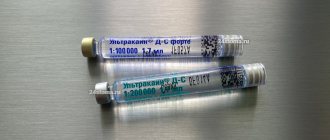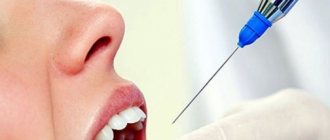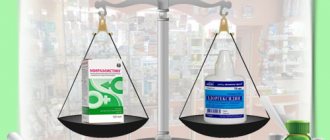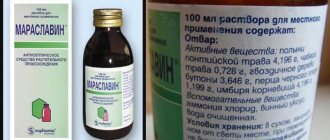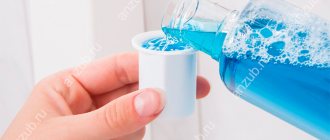The choice of anesthetic in dental treatment
The middle and older generations of our country remember very well the times when the need to seek help from a dentist for the prevention and treatment of teeth was associated with the unpleasant feeling of severe and difficult-to-bear pain awaiting the future patient, and therefore a visit to the doctor was made only in cases of the most extreme and urgent need. Modern dentistry, unlike the level of dentistry of the 80-90s of the last century, is much better armed. The most popular anesthetic in dentistry of the past, novocaine, is irretrievably becoming a thing of the past and has been replaced by new drugs that are less toxic and more effective.
When choosing an anesthetic, important indicators are:
- effectiveness of pain relief
- good tissue permeability and long-lasting analgesic effect of the drug
- minimal toxicity and safety of the drug
Since almost all modern drugs are quite effective, the most important point when choosing an anesthetic is its safety.
No less important when choosing an anesthetic is its relationship to the vasoconstrictor (a drug that narrows blood vessels, which leads to a decrease in blood flow in them and prolongs the effect of the drug) - adrenaline. For many patients with pathologies of the cardiovascular system, with endocrine pathologies, patients with bronchial asthma and other diseases, vasoconstrictor-adrenaline is contraindicated. In addition, adrenaline itself maintains a high level of stress, which is undesirable during treatment.
The most popular and corresponding to the above requirements are the following anesthetics:
- Ultracaine DS forte
- Ultracain DS
- Scandonest SVC
Ultracaine DS forte and Ultracaine DS The main anesthetic substance for these drugs is Articaine, which is 2 times more effective than lidocaine and 6 times more effective than novocaine. The drug is completely excreted from the body and is non-toxic, since it does not contain parabens (anesthetic preservatives), there is practically no allergic reaction to the substance and, according to clinical studies, the drug is safe in 99.4% of cases. The main advantages of the drug are:
- high efficiency of the drug with a low degree of toxicity
- almost instantaneous effect of the drug (from 30 seconds)
- safety of the drug for pregnant and nursing mothers, as well as for preschool children
- The duration of anesthesia depends on the anesthesia technique used by the doctor (from 1.5-2 hours when treating one tooth and up to 5-6 hours for more complex dental treatment methods).
Teeth to which standard therapy is applicable are best anesthetized with Ultracaine DS with a minimal content of adrenaline. The effectiveness of the drug is quite sufficient for a fairly long operation, and only in difficult cases is it recommended to use Ultracain DS Forte with a higher concentration of the vasoconstrictor.
Scandonest SVC This drug is recommended for patients for whom the vasoconstrictor-adrenaline is strictly contraindicated (patients with pathologies of the cardiovascular system, etc.) since it itself has a vasoconstrictor effect and therefore can be used without adrenaline.
Indications and features of use
Local anesthesia without adrenaline in dentistry is used in the following situations:
- If the patient has high blood pressure or cardiac dysfunction (heart disease, heart rhythm disturbances, failure, etc.). Moreover, for moderate hypertension, anesthetics with a reduced concentration of adrenaline are recommended; for severe hypertension, anesthetics with its complete absence are recommended.
- For dental treatment of children under 5 years of age.
- Women during pregnancy and lactation. Experts still recommend using drugs containing low concentrations of adrenaline so that the anesthetic is absorbed into the blood more slowly and does not penetrate the hematoplacental barrier.
- When treating patients with pathologies of the endocrine system, including those due to age (menopause in women) and those requiring thyroid hormone replacement therapy.
- Women during menstruation.
- Patients who are likely to develop adverse reactions: against the background of stress, while taking antidepressants or drugs that block beta-adrenergic receptors (some drugs to lower blood pressure and certain heart medications).
If the patient has one of these conditions or there is a suspicion that an adverse reaction to the anesthetic may develop, be sure to warn the dentist about this before starting treatment.
Instructions for Ultracaine D-S (Method and dosage)
The administration of Ultracaine D-S requires special attention and professionalism to avoid getting inside the vessel. Test aspiration before injection also helps prevent intravascular injection. The use of the drug on inflamed areas of tissue is not recommended. Uniject K injection syringe and cartridges. In this case, the drug is administered so that its pressure corresponds to the sensitivity of the tissue at the injection site.
For each use according to indications, the specialist sets a certain dosage of the drug. For example, when preparing a tooth for a crown or a dental cavity for treatment, use 0.5-1.7 ml of Ultracaine for a vestibular injection, without interfering with the lower premolars. The accuracy of the drug dose depends on the duration of the intervention and the desired depth of anesthesia. On average, one dental intervention requires 7 mg of articaine hydrochloride per 1 kg of patient weight.
Price of Ultracain D-S, where to buy
Injection solution Ultracain D-S 40 mg+5 mcg/ml, 10 pcs. can be purchased at almost any pharmacy in Russia. Moreover, the cost of this drug varies between 464-610 rubles.
- Online pharmacies in RussiaRussia
- Online pharmacies in UkraineUkraine
ZdravCity
- Ultracaine D-S solution d/in.
(with epinephrine) 40 mg+0.005 mg/ml amp. 2ml No. 10Sanofi-Winthrop Industrie/Delpharm Dijon RUB 1,379 order - Ultracaine D-S solution d/in. (with epinephrine) 40 mg+0.005 mg/ml cartridges 1.7 ml No. 100 Sanofi-Aventis Deutschland GmbH / Sanofi Winthrop Industry
6400 rub. order
- Ultracaine D-S forte solution for injection. 1.7 ml 100 pcs. Sanofi-Aventis Deutschland GmbH / Sanofi Winthrop Industry
RUR 6,443 order
- Ultracaine D-S forte solution for injection. 2ml 10 pcs. Sanofi-Aventis Deutschland GmbH/Delpharm Dijon France
RUB 1,450 order
Pharmacy Dialogue
- Ultracaine D-S ampoules 2ml No. 10Sanofi-Winthrop Industrie
RUB 1,318 order
- Ultracaine D-S Forte ampoules 2ml No. 10Sanofi-Winthrop Industrie
RUB 1,340 order
- Ultracain D-S (cart. 1.7 ml No. 100)Sanofi-Aventis
RUR 6,286 order
- Ultracaine D-S (amp. 2 ml No. 10) Delpharm Dijon
RUB 1,326 order
show more
Pharmacy24
- Ultracaine D-S forte cartridge 1.7 ml No. 100 solution Sanofi-Aventis Deutschland GmbH, Germany/Sanofi Winthrop Industries, France
2214 UAH.order
Anesthesia methods
Depending on the goals and nature of the problem, the doctor chooses the method of pain relief. In medicine there are two main methods:
Anesthesia
It is most often used in surgery, and in dentistry much less often, in case of urgent need. It affects the entire body of the patient, inducing a state of sleep. At this time, all muscles relax and consciousness turns off. You can administer painkillers intravenously or inhale vapors through a mask. Deep anesthesia is used during complex operations when a person does not have enough strength to cope with pain or it is necessary to completely eliminate body movement. During sleep, the doctor monitors the patient's condition to avoid emergency situations.
Recovery from anesthesia is the body’s return to normal functioning after a long “freeze.” For all people, this process proceeds differently, some experience signs of nausea or a feeling of lethargy, while others wake up well-slept and rested.
General anesthesia in dentistry during pregnancy is applicable only in emergency cases when there is no other alternative.
Local anesthesia
Unlike anesthesia, it occurs locally, affecting only certain areas of the body. Can be used for children and pregnant women, without fear of unwanted consequences. In dental practice, this method is most often used, so we will talk about it in more detail.
Types of anesthesia
There are several methods in medicine; they differ in duration, effectiveness and location.
Conductor.
The most common type of local anesthesia in dentistry. Using a special needle, the drug is injected near the nerve trunk, blocking pain impulses that go to the brain. The injection is given in doses not exceeding a volume of 5 ml. To ensure a guaranteed result, the injection is placed at an angle of 90 degrees.
“Freezing” applies only to a certain group of teeth, in the place where the treatment will take place. After about 15 minutes, the medicine begins to work and the doctor can begin work.
The injection site can be additionally lubricated with lidocaine. If during the procedure the patient continues to feel discomfort, another dose may be administered.
Infiltration
It differs from the conductor only in the angle of the needle and the place of application. The drug is injected directly into the root apex area. This type is most effective for teeth and upper jaw. With infiltration anesthesia, you can “freeze” both a small area and a large surface of the oral cavity along with soft tissues.
Applique
This method is performed without a syringe. The dentist applies the necessary product directly to the diseased tooth and the soft tissues surrounding it using a cotton swab or fingers. Some doctors spray anesthetics using a special spray.
It is mainly used during simple and quick operations, since its effect is short-term and does not protect against severe pain. The result is stored for a maximum of 20 minutes. It is often used as the first stage before the injection “freezing” method.
Intraosseous
The dentist resorts to this technique much less often when other types of anesthesia have proven ineffective. An analgesic that is injected directly into the hard tissues between the teeth. The difficulty lies in the technique; to get to the bone, the doctor cuts the gum and drills a hole in it with a bur. This is the most effective method for quickly and permanently freezing the required area.
Intraligamentary
Its peculiarity is the high speed of injection, so numbness occurs almost immediately, but lasts only 20-30 minutes. The advantage of intraligamentary anesthesia in dentistry is that it acts directly on the tooth without touching the cheeks, lips and tongue. That is why the recovery process is much easier.
Conditions that local anesthetics must adhere to
In general, local anesthetics should:
- Do not cause allergies
- Have minimal toxicity to the body
- Have few side effects
- Easy to dissolve and excrete
In addition to this, anesthetic agents are required to:
- The effect is strong enough to completely anesthetize the tooth and surrounding tissues.
- Rapid numbness - no more than 5 minutes after the injection
- The numbness should last at least an hour - so that it is enough for the entire procedure, including the very last manipulations
- Anesthesia should take place no more than 2-3 hours later.
- Long-term stability of the drug itself – at least 2–3 years
Contraindications for use
This drug is not used for patients suffering from allergies to articaine, epinephrine or its other components. In addition, Ultracaine is contraindicated for:
- tachyarrhythmias and tachycardia;
- angle-closure glaucoma;
- pheochromocytoma;
- hyperthyroidism;
- bronchial asthma;
- acute cardiovascular failure;
- severe form of arterial hypertension and so on.
